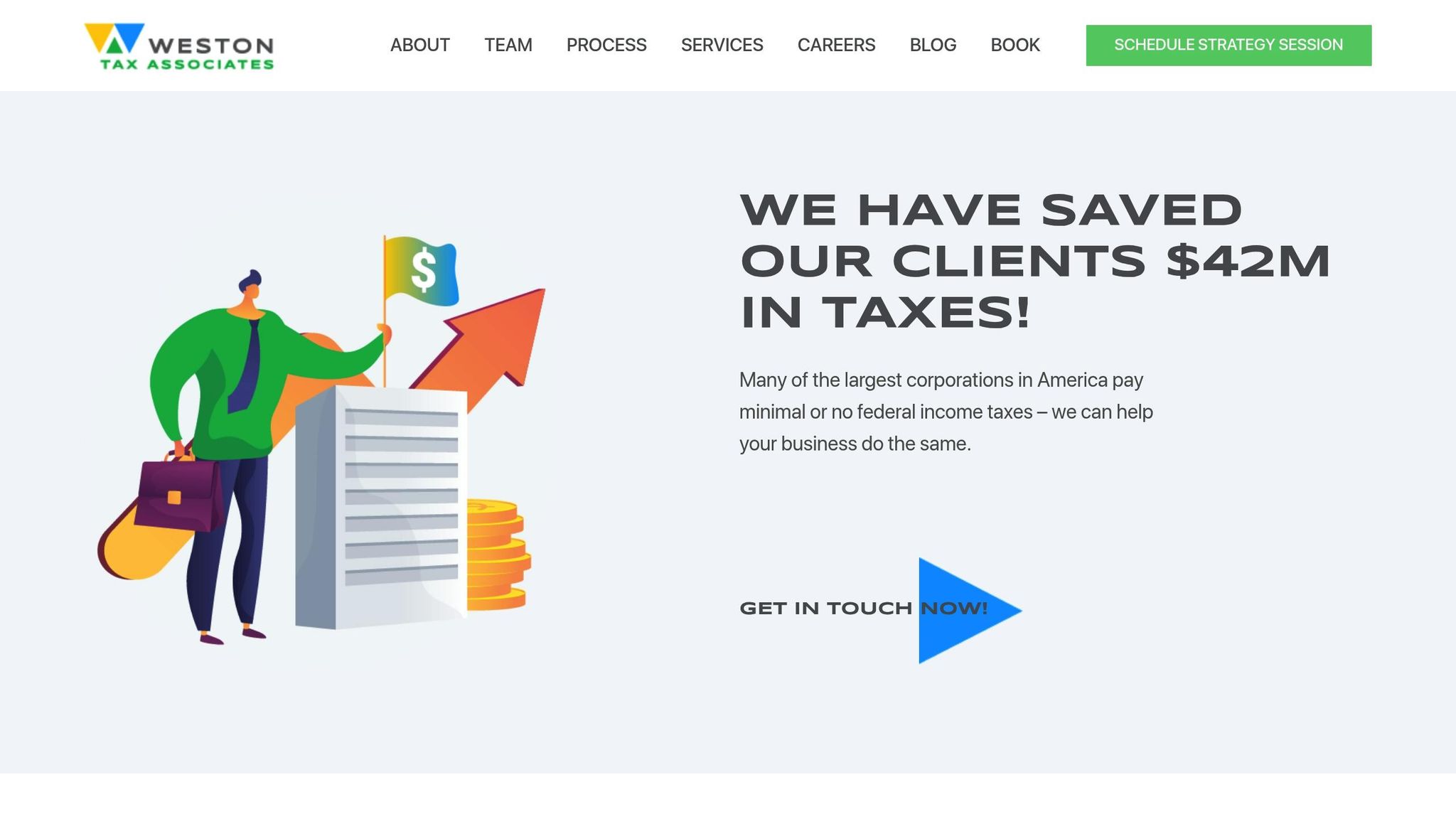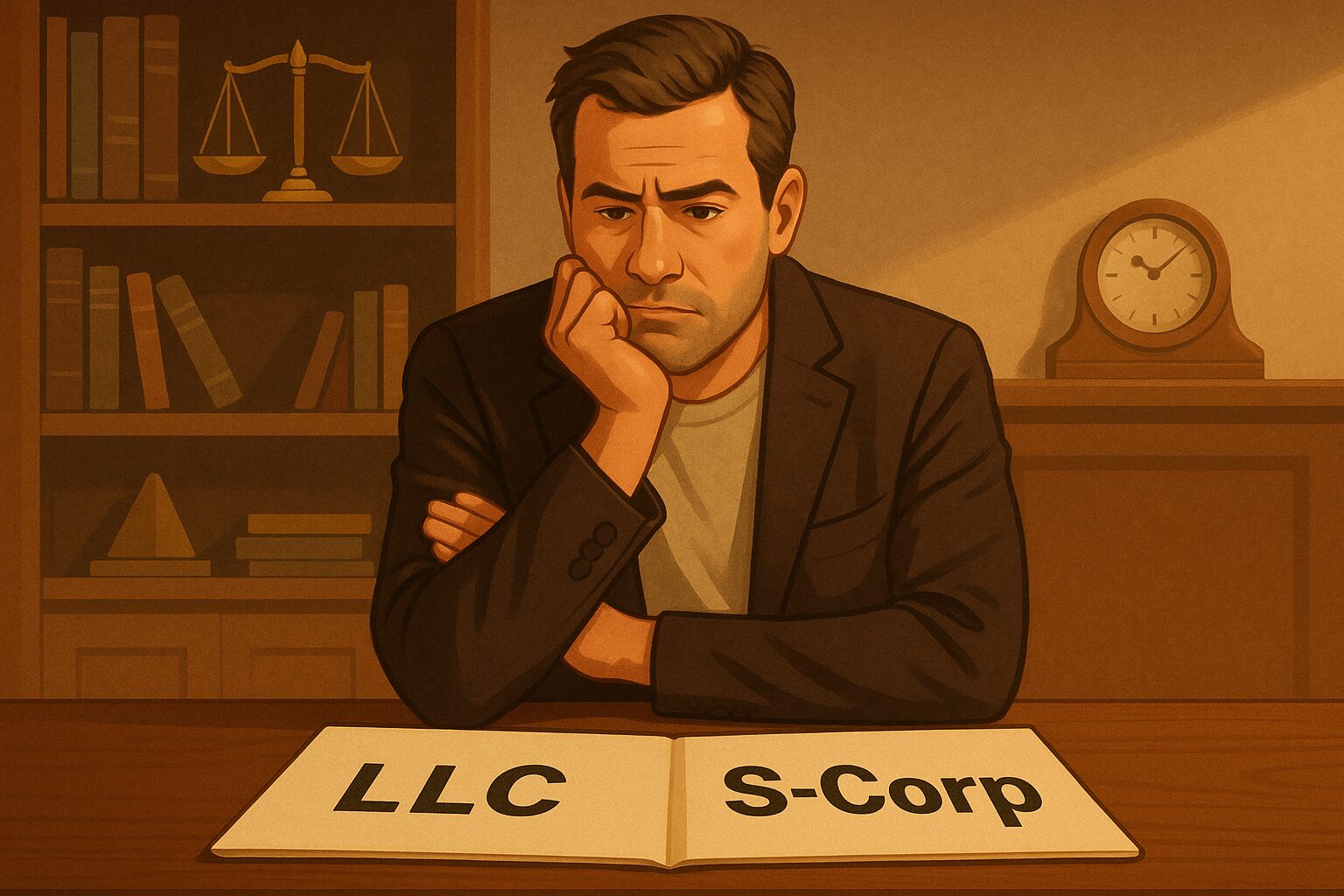Charitable carryovers allow businesses to spread out unused tax deductions from charitable donations over multiple years, up to a five-year limit. This is particularly useful when donations exceed IRS deduction limits, such as the 10% cap on taxable income for C corporations. By understanding how to calculate and apply these carryovers, businesses can optimize tax savings, manage cash flow, and plan for fluctuating income levels.
Key Points:
- What They Are: Unused charitable deductions carried forward for up to 5 years.
- Who Benefits: Businesses exceeding annual IRS deduction caps.
- How It Works: Apply older carryovers first (first-in, first-out method); unused carryovers expire after five years.
- IRS Limits: 10% of taxable income for C corporations, with different rules for partnerships and S corporations.
- Eligible Contributions: Cash, appreciated assets, securities, and property donations qualify, but donations to political groups or foreign charities generally do not.
- Documentation: Detailed records, including receipts, appraisals (for noncash donations), and IRS Form 8283 for contributions over $500, are essential.
Effective use of charitable carryovers requires proper planning, accurate tracking, and compliance with IRS rules. Businesses should consider professional tax advice to ensure they maximize deductions while staying compliant.
Eligibility and Calculation of Charitable Carryovers
Understand which contributions qualify and how to calculate carryovers to make the most of your tax benefits.
Qualifying Charitable Contributions
Not all charitable donations are eligible for carryovers. The IRS has specific rules about which contributions qualify to be carried forward into future tax years.
Cash donations are the simplest type of qualifying contribution. If your business donates money directly to a qualified 501(c)(3) organization and the amount exceeds annual deduction limits, the excess can be carried forward. This applies to payments made through common methods like checks, credit cards, or electronic transfers.
Donations of appreciated assets – such as stocks, bonds, or real estate held for over a year – may qualify for a full fair market value deduction. Any amount above the deduction limit can be carried forward. For example, if your company donates appreciated stock valued at $150,000 but can only deduct $80,000 this year due to income limits, the remaining $70,000 becomes a carryover.
Securities and mutual fund shares follow similar rules. To qualify for a fair market value deduction, you must have held the securities for more than 12 months. If held for a year or less, the deduction is limited to the original cost basis.
Property donations, including real estate, equipment, or vehicles, may also result in carryovers when their fair market value exceeds annual limits. Donations worth more than $5,000 require a professional appraisal to substantiate the value.
However, certain contributions don’t qualify for carryovers. These include donations to political organizations, candidates, or lobbying groups. Contributions to foreign charities are generally excluded unless they meet specific treaty rules. Additionally, payments for raffle tickets, auction items, or other transactions where you receive goods or services in return must be reduced by the value of those benefits.
Once you’ve identified qualifying contributions, the next step is calculating carryovers by applying IRS deduction limits and ordering rules.
How to Calculate Charitable Carryovers
After confirming which contributions qualify, you’ll need to calculate how much can be deducted this year and how much can be carried forward. This involves understanding the IRS’s annual deduction limits and ordering rules for carryovers.
Annual deduction limits depend on your business structure. For C corporations, the limit is 10% of taxable income, calculated before applying charitable deductions, certain other deductions, and carrybacks. For partnerships and S corporations, the limits apply at the individual partner or shareholder level. Typically, individuals can deduct up to 50% of adjusted gross income for cash contributions and 30% for appreciated asset donations.
Start by determining this year’s deduction limit. For a C corporation, multiply taxable income (before charitable deductions and specific adjustments) by 10%. If your contributions exceed this limit, the excess becomes a carryover.
Carryover ordering uses a first-in, first-out method. Older carryovers are applied before current-year contributions. For example, let’s say your corporation has $600,000 in taxable income, giving you a $60,000 charitable deduction limit. If you have $15,000 in carryovers from two years ago, $20,000 from last year, and $40,000 in new contributions this year, you’d apply the carryovers in order. First, you’d use the $15,000 from two years ago, then $20,000 from last year, and $25,000 from this year’s contributions, leaving $15,000 of this year’s donations as a new carryover.
Income levels can also impact how much of a carryover you can use. Higher taxable income years allow you to apply more carryovers, while lower-income years might limit usage, potentially leading to some carryovers expiring after the five-year limit.
Keeping detailed records is essential. Track contribution dates, amounts, and carryover origins, as unused carryovers expire after five tax years. Additionally, state tax rules may differ from federal regulations, with varying limits and carryover guidelines. Proper recordkeeping and calculations are key to effective tax planning and compliance.
Methods to Maximize Charitable Carryovers
Careful planning can help you make the most of your charitable contributions while building carryovers that benefit future tax years.
Timing and Grouping Contributions
Timing your donations strategically can lead to larger deductions and greater carryover opportunities. For instance, instead of spreading out $30,000 in donations annually over three years, you might contribute $90,000 in a single year. This approach is particularly effective if your income fluctuates, as it allows you to maximize deductions in high-income years.
For C corporations, timing is equally important. If your business expects $800,000 in taxable income this year but only $400,000 next year, making a large donation now lets you fully utilize the 10% deduction limit while carrying over any excess for future use. This strategy ensures that contributions align with profitability, maximizing immediate benefits and creating a buffer for leaner years.
To qualify for deductions in the current tax year, ensure donations are postmarked or charged by December 31. If you’re planning multi-year pledges, align them with your income projections to optimize deductions.
Next, let’s explore how donating appreciated assets can further boost your tax benefits.
Donating Appreciated Assets
Donating appreciated assets, like stocks or real estate, can be a powerful way to avoid capital gains taxes while generating significant deductions and carryovers. Take, for example, a manufacturing company that bought 1,000 shares of Microsoft stock at $50 per share in 2020. If those shares are worth $420 each by September 2025, donating them allows the company to claim a deduction based on the current market value while avoiding taxes on the $370 per share gain.
Real estate offers similar benefits. Imagine a restaurant owner who donates a building purchased for $200,000 that’s now worth $500,000. The deduction reflects the current market value, and the owner avoids capital gains taxes on the $300,000 appreciation.
To maximize these benefits, donate assets when their market value peaks. Focus on items with the biggest gap between their cost basis and current value – assets held long-term often yield the best results.
Beyond appreciated assets, donor-advised funds provide another effective tool for managing charitable carryovers.
Using Donor-Advised Funds
Donor-advised funds (DAFs) offer flexibility and efficiency for charitable giving while enhancing your ability to manage carryovers. A DAF acts like a charitable savings account: you contribute funds, claim an immediate tax deduction, and distribute grants to charities over time. For example, a software company enjoying a banner year might contribute $200,000 to a DAF, claim the full deduction that year, and then allocate grants to various charities in subsequent years.
Contributions to a DAF grow tax-free, which means a $100,000 contribution could appreciate significantly, allowing for a greater charitable impact. Additionally, DAFs handle administrative tasks like paperwork and due diligence, reducing the burden on your business.
The flexibility of DAFs makes them especially useful for businesses navigating major liquidity events, such as sales or acquisitions. They allow you to secure immediate tax benefits while giving you time to thoughtfully decide how and when to distribute funds to charitable organizations that align with your goals.
Compliance and Documentation Requirements
Meeting documentation standards is crucial for safeguarding your tax strategy and ensuring your carryovers work as intended. Incomplete or missing records can attract unwanted IRS attention.
IRS Reporting Standards

The IRS has specific rules for documenting charitable contributions, depending on their size and type:
- Cash donations under $250: A simple bank record or a receipt from the charity is enough.
- Cash donations of $250 or more: You’ll need a written acknowledgment from the charity. This must include the donation amount, the date, and a statement confirming whether you received any goods or services in return.
For donations over $500, the requirements increase. You must attach Form 8283 (Noncash Charitable Contributions) to your tax return. This form requires detailed information about the donated property, including its description, acquisition date, and cost basis. For contributions exceeding $5,000, a qualified appraisal from a certified appraiser is mandatory.
When donating real estate or other complex assets valued above $5,000, the appraisal must be performed no earlier than 60 days before the donation and no later than the tax filing deadline. The appraiser must sign Form 8283, and both you and the receiving charity must complete specific sections. If any part is incomplete, the IRS may reject the entire deduction – not just reduce it.
C corporations must maintain board resolutions that detail the donation’s recipient, amount, and business purpose. For pass-through entities like S corporations and partnerships, owners need detailed documentation showing how charitable deductions are allocated to individual returns.
These reporting standards directly influence how you track and manage charitable carryovers.
Tracking Carryovers
To avoid losing carryovers, you must track their amount, origin year, and expiration date carefully. Each carryover has a five-year window for use, so staying organized is key.
Using a detailed spreadsheet or accounting software can help. For example, if you generated a $50,000 carryover in 2023, you have until 2028 to use it. Track how much you apply each year and maintain a running balance to ensure you don’t miss out.
Your records should include:
- The original tax return showing the carryover’s creation
- Calculations detailing how the carryover amount was determined
- Annual tracking of how much has been used
When managing multiple carryover years, things can get tricky. For instance, you might have carryovers from 2022, 2023, and 2024 at the same time. The IRS requires you to use the oldest carryovers first, so your records must clearly separate each year’s amounts and expiration dates.
Integrating this information into your accounting system is a smart move. Your general ledger should reflect both current-year charitable deductions and carryover applications. This not only simplifies audits but also ensures your books align with your tax returns.
Common Compliance Mistakes to Avoid
Some common errors can jeopardize your charitable deductions and lead to IRS penalties. Here’s what to watch out for:
- Reconstructing records: The IRS requires contemporaneous documentation, so don’t try to recreate records after the fact.
- Overvaluing donated assets: The IRS pays close attention to appraisals, especially for unique or hard-to-value items. Using unqualified appraisers or inflating values can result in penalties of 20% of the underpayment. Always hire certified appraisers with expertise in the type of asset you’re donating.
- Mixing personal and business donations: Business owners sometimes mistakenly claim personal donations as business expenses (or vice versa). Keep separate records and ensure business contributions serve a legitimate purpose, like improving community relations or employee morale.
- Failing to obtain proper acknowledgments: The IRS won’t accept retroactive acknowledgments. Make sure you secure all required documentation before filing your return, including completed charity sections on Form 8283 for noncash donations.
- Errors in carryover calculations: Miscalculating adjusted gross income (AGI) limitations can lead to incorrect carryover amounts. These errors often snowball over time, raising red flags with the IRS.
- Inadequate record retention: The IRS can audit returns for up to three years after filing – or six years for substantial underreporting. Keep all documentation for at least seven years, including appraisals, receipts, acknowledgments, and carryover tracking records.
If your business operates across multiple states, things get even more complicated. State rules for charitable deductions may differ from federal ones, so ensure your documentation supports both. Proper recordkeeping is essential for protecting your tax planning strategy and making the most of your carryovers.
sbb-itb-99cfa38
Impact of Recent Tax Law Changes on Charitable Carryovers
Recent updates to tax laws have introduced stricter rules for documenting and reporting charitable carryovers. Here’s a closer look at the changes coming in 2025 and how they might affect businesses.
2025 Tax Reform: Key Provisions
While the basic rules for charitable deductions remain the same, the reforms place a stronger focus on detailed documentation. For noncash donations, valuations must now be backed by appraisals from certified professionals. Additionally, changes to electronic filing require standardized and timely submission of records, which may lead some businesses to upgrade their systems to meet the new requirements.
Effects on Small and Medium-Sized Businesses
These reforms, part of a broader push for stricter tax compliance, bring both challenges and opportunities for smaller businesses. On one hand, the need for more thorough record-keeping could increase administrative costs. On the other hand, clearer guidelines can simplify reviews and help businesses plan more effectively. To stay compliant, companies may need to reassess their cash flow strategies and consider investing in technology or professional advice. By embracing these adjustments, businesses can continue leveraging charitable contributions while reducing the risk of compliance issues.
Using Professional Tax Planning for Charitable Carryovers
Recent changes to tax laws and stricter documentation rules have made managing charitable carryovers more complicated than ever. For many business owners, navigating these complexities can feel overwhelming.
That’s where professional tax planning comes in – it turns these challenges into opportunities for strategic financial growth.
How Professional Guidance Can Help
Building on the basics of IRS compliance and carryover calculations, tax professionals can simplify the process and uncover opportunities you might not even know exist. Their expertise ensures your deductions are fully compliant with IRS standards while maximizing financial benefits.
One key area where professionals shine is in optimizing the timing of charitable contributions. By reviewing income projections and crafting tailored strategies, they can help you make contributions at the most advantageous times, potentially unlocking significant tax savings.
Another crucial benefit is documentation and compliance support. Properly documenting charitable contributions is essential, and expert guidance ensures your business meets all requirements from the outset. This proactive approach not only helps avoid costly errors but also reduces the risk of IRS audits or disallowed deductions.
Tax professionals also bring creative strategies to the table, aligning charitable giving with your broader business goals. They can advise on the best types of assets to donate, help you utilize donor-advised funds effectively, and integrate charitable giving into your overall tax plan. The result? A comprehensive approach that minimizes your tax liability while supporting your philanthropic efforts.
Specialized firms, in particular, can make a significant difference here.
Weston Tax Associates: Expertise in Charitable Tax Planning

Weston Tax Associates is a trusted partner for small and medium-sized businesses navigating the complexities of charitable carryovers. Their tech-forward approach and experienced team are dedicated to helping businesses maximize their charitable tax benefits.
The firm’s tax planning services are designed to legally reduce tax liabilities through strategic charitable giving. Weston Tax Associates collaborates closely with business owners to create multi-year charitable strategies that align with cash flow and growth goals. This ensures charitable carryovers become a valuable part of your overall wealth preservation and tax optimization plan.
Compliance is another area where Weston Tax Associates excels. They streamline documentation requirements, integrating them seamlessly into your tax strategy. Their systematic approach to tracking carryovers helps prevent common errors and ensures you’re always prepared for IRS scrutiny.
If issues arise during an audit or review, their expertise in IRS negotiation provides critical support. Weston Tax Associates understands both the technical details of charitable carryovers and the nuances of the IRS examination process, giving business owners peace of mind when implementing ambitious yet compliant tax strategies.
Recognizing the unique challenges faced by small and medium-sized businesses, Weston Tax Associates offers solutions that reduce administrative headaches while maximizing the tax advantages of charitable giving.
Conclusion
The strategies discussed here can help you make the most of your tax planning while supporting causes that matter to you. Charitable carryovers allow you to extend tax savings across multiple years, all while advancing your philanthropic efforts.
Key Takeaways for Business Owners
For business owners, the main takeaway is this: planning your charitable carryovers strategically is essential. It’s not just about making donations – it’s about understanding the timing, required documentation, and calculation methods to maximize the benefit. With the five-year carryover period, you have the flexibility to optimize deductions over time.
Accurate documentation is critical. Be sure to keep thorough records, including receipts, acknowledgments, and appraisals, to meet IRS requirements and avoid complications.
Timing your contributions wisely can also make a big difference. For example, consider grouping donations in high-income years to maximize deductions, then carrying forward any excess amounts to future tax years. This approach is particularly effective for businesses with fluctuating income levels.
Recent tax reforms in 2025 have introduced new challenges for charitable carryover planning, especially for small and medium-sized businesses. These changes make it even more important to seek professional guidance to navigate the updated rules and ensure compliance.
Next Steps for Better Tax Planning
Now is the time to take a closer look at your charitable strategy. Start by reviewing your past contributions to determine whether you’ve been maximizing deductions and properly tracking carryovers. Use the methods discussed earlier to identify potential opportunities you may have missed.
Working with a tax professional can help you refine your approach. Weston Tax Associates specializes in helping small and medium-sized businesses manage the complexities of charitable carryovers. Their tech-driven tools and experienced team can assist in creating a multi-year plan that aligns with your business goals while staying within IRS guidelines.
Make it a habit to review your charitable strategy throughout the year. Regular updates and professional advice will ensure your tax plan stays effective and aligned with your financial objectives.
To get started, gather your charitable contribution records from the past five years and schedule a consultation with a qualified tax advisor. This proactive step will help your business fully leverage the benefits of charitable carryovers while continuing to support the causes that matter most to you.
Welcome to the New Age of Accounting. Let’s begin.
FAQs
How can business owners accurately calculate and use charitable carryovers to maximize tax savings?
To make the most of charitable carryovers, businesses need to start by calculating how much of their contributions exceed the annual deduction limits. These excess amounts can usually be carried forward for up to five years. Keeping thorough records of these carryovers and accurately reporting them on Schedule A in future tax filings is a must.
It’s also crucial to adhere to IRS rules on contribution limits, which are often tied to a percentage of your adjusted gross income (AGI). Ensuring proper documentation – like receipts and acknowledgment letters – is key to staying within the guidelines. For tailored advice, Weston Tax Associates can assist in applying your charitable carryovers correctly, helping you maximize deductions while remaining compliant with tax laws.
What documentation is needed for different types of charitable contributions to meet IRS requirements?
To meet IRS requirements, the documentation you need for charitable contributions varies based on the type and value of your donation:
- Cash donations: Keep a bank record, like a canceled check or bank statement, or obtain a written acknowledgment from the charity.
- Noncash donations exceeding $500: You’ll need to complete and file Form 8283 with your tax return.
- Donations over $5,000: Along with Form 8283, a qualified appraisal is required.
- Contributions of $250 or more: The charity must provide a written acknowledgment that includes the donation amount and confirms no goods or services were received in return.
Having the right documentation not only keeps you compliant with IRS rules but also ensures your deductions are secure when filing taxes. For extra support with tax planning or compliance, seeking advice from a tax professional can be a smart move.
How do the 2025 tax law changes affect charitable carryovers for small and medium-sized businesses?
The tax law changes set to take effect in 2025 bring new rules that will influence how small and medium-sized businesses handle charitable carryovers. A major update is the introduction of a 0.5% of Adjusted Gross Income (AGI) floor for charitable deductions. This new rule applies not only to donations made in the current year but also to any carry-forward contributions starting in 2025. Essentially, businesses must meet this AGI threshold before they can claim these deductions.
On the bright side, businesses can still carry forward excess charitable contributions for up to five years, which provides some flexibility for tax planning. To make the most of these changes and remain compliant, it’s essential for businesses to review their charitable giving strategies. Seeking advice from tax professionals who specialize in business compliance and planning can help ensure everything is in order.

Chris is the Managing Partner at Weston Tax Associates, a best-selling author, and a renowned tax strategist. With over 20 years of expertise in tax and corporate finance, he simplifies complex tax concepts into actionable strategies that drive business growth. Originally from Sweden, he now lives in Florida with his wife and two sons.








